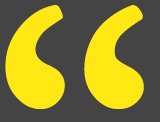The Lego case
Using imagination for change
Some background and a chapter from the dot.book
The letter
Last year in November, I wrote a letter to Thomas Kirk Kristiansen, a member of the family who founded Lego.
The reason was that Lego got a mention in book 1, beginning and then again in the dot.book, and I decided to send them copies of both texts.
They didn’t answer, which was expected but is still a bit of a disappointment.
Every now and again, I think about the Lego chapter in the dot.book, because it’s actually quite generous. Instead of simply sending Lego to Mars with their bleeding plastic toys that choke our planet, the chapter contains fun ideas for how to replace these toys and how to rethink the trade in toys for the benefit of craftspeople, communities and children worldwide.
And since my mind keeps coming back to these ideas, I decided to publish them here, and to add a suggestion: Maybe a new kind of protest could consist in creating alternatives for companies whose products harm us and our habitat. And we could do until every customer wonders why those companies keep producing their — well, let’s say: their stuff.
So here it is, the Lego chapter from the dot.book. And if you would like to add ideas, you can send them to contact@dot-international.net // subject Lego reinvented.
Toys around the world
toys around the world, a potential international company for toys and games
I will write a letter to Lego, or maybe I already have, because Lego gets a mention in book 1, beginning, on the wearisome subject of plastic.

‘What is our progress on plastic usage, Dana?’
‘The no plastic approach isn’t easy,’ Dana said. ‘The other day, a friend asked me whether her kids would be allowed to play with Lego in our town. Lego! What was I supposed to say? No, we forbid Lego? It sounds so weird. But if we’re serious about a plastic free town, then plastic toys will have to stay out too.’
‘On the other hand,’ Megan said, ‘if we offer wooden toys, we would encourage a greater use of wood, and that isn’t sustainable either.’
‘I had a metal building set,’ Alice commented. ‘And there are trees which grow fast, aren’t there?’
‘Yes, but there are limits,’ Megan returned.
‘Then we’ll work out a sustainable limit,’ Alice said. ‘Western kids have too many toys anyway. Maybe we can ask Education to add classes where kids can learn to build their own toys.’
book 1, beginning, week 4
And then, one afternoon I thought, what if Lego, of all companies, would do an actual rethink on their business practices — and on plastic? And adjust the dot.model for their business.
What could that look like?
The basic idea of dot. is that you trade in ideas rather than in finished products.

When toys found the way on to the list, the flow was briefly interrupted by Lucy who pointed out that many toys were protected by copyrights. Fi suggested that it should be possible to licence an idea so that the toys could be produced locally.
book 1, beginning, week 3
So, what is the basic idea of Lego?
To make parts of toys that can be stuck together?
To offer sets that belong to a story?
Well, that’s at least part of it.
So how could these ideas be transferred to local toy workshops in a way that Lego still earns money?
I have to make a confession at this point. I never played with Lego. I had a metal building set, and wooden building blocks, and at some point some Lego imitation. But never the real thing. So any Lego fan might be disappointed that I don’t pick any big sales hit in my examples. I simply don’t know them.
So, back to the case.
Let’s say someone wants to buy a Lego fortress locally. Lego’s idea would be to have a fortress divided into loads of single parts which can be stuck together. So far, so good.
There is another hurdle though. How can this be done without the use of plastic?
Is Lego without plastic even possible?
Would the dot.model be a chance for Lego to get out of plastic?
Maybe.
Let’s say the local toy workshop has worked out a way to offer the Lego fortress in four different material version.
First in timber. We have learned from Ikea that you can make timber stick together, though the art of ‘sticking’ wooden parts together is much older.
(Sometimes I wish I knew all the right words, but this way I get to smile about myself and hell, any smile these days counts. Note from March 2022)
So the timber Lego fortress would be a beauty.
Same goes for the metal version.
Maybe a little more difficult, but certainly intriguing, would be a straw, hemp or reed version, maybe with some cork added.
And, here is a version that makes me laugh: a fortress version for babies, built from cushions which could be attached via buttons, buckles, zips, and if we find a plastic-free way to do it with hook-and-pile fasteners.
Lego could still invent new stories and designs, but its whole palette would be vastly enriched by what I like to think of as the local variations which include variations in the materials.
On the one hand, such a practice would make collecting Lego products more difficult, and collecting seems to be an important sales drive for Lego.
On the other hand, whether we like it or not, we need to produce and consume less. And, the local variations would be a lot more valuable than the editions everyone can buy. There could be online forums about whose cushion fortress is the best, and whether it can also be used in pillow fights.
There is as always the question of feasibility, but at the end of the day that’s a question of getting the numbers right. How many cushion fortresses does my workshop have to produce so that the price is acceptable for parents?
As a bonus, Lego could build little farewell spots where plastic toy collectors find a proper burial site including burial rituals for this unfortunate material.
And next door, at the toy workshop, the toy collectors can replace their Lego pirate ship with a beautiful timber & cotton version and little straw pirates.
The cushion version of the pirate ship has the big advantage that you can also sit on it.
Multifunctional — I like that in a toy.
One of the additional advantages of using easily recyclable materials for toys is that older children can put their toys back into the recycling cycle, and maybe even create something new from the recycled material — like the recycled material of the well worn papier mâché monsters and dinosaurs could become part of a bookcase, or the recycled material could be handed down to the younger siblings so that they can shape their toys from the same materials.
This also gives children an idea of natural cycles: things grow, have a life and then they die. And any death can be the basis for new life.
I have been thinking about rituals which mark points in a person’s life. In the easy town story, one of those rituals is to build your first bicycle to mark the age of 12. Maybe building your first toy could mark the age of 6.
Maybe Lego will give this a thought. After all they want to do something for the children of the world. And providing parents with job opportunities and abandoning the use of plastic would ensure that these parents can provide well for their children, and that the planet gets a better chance to survive.
So much for Lego.
Toys around the world
Toys around the world will connect independent toy makers with the global market via the toys around the world website, and the toys and games will be produced at local toy workshops.
Like dot.international, toys around the world, the umbrella company, would provide the framework for toy makers and toy workshops so that they can make a living of their imagination and skills.
dot.book
Note: The dot.book introduces 12 business ideas, including dot.

